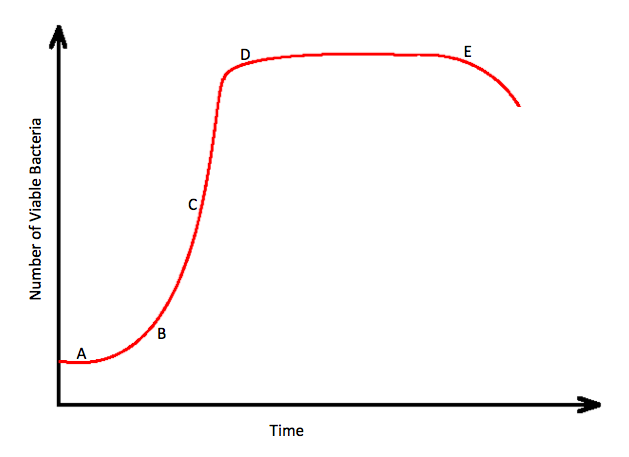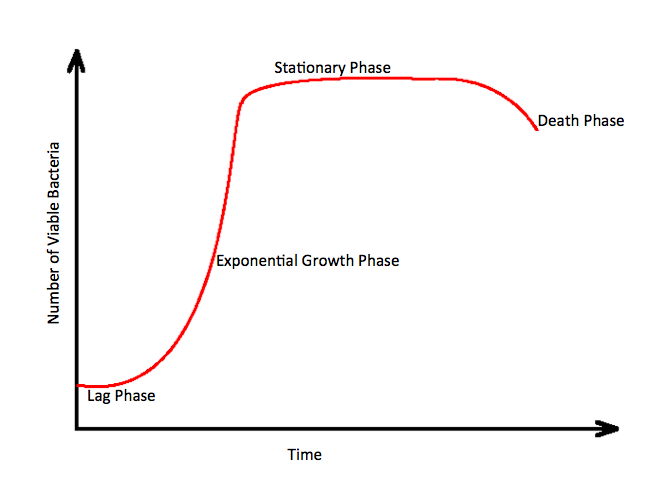WBR0845
Jump to navigation
Jump to search
| Author | [[PageAuthor::Yazan Daaboul, M.D. (Reviewed by Serge Korjian)]] |
|---|---|
| Exam Type | ExamType::USMLE Step 1 |
| Main Category | MainCategory::Microbiology |
| Sub Category | SubCategory::General Principles |
| Prompt | [[Prompt::A researcher is studying the life cycle of Clostridium difficile. He enriches for C. difficile in the appropriate anerobic culture media for several days and at samples the culture a several stages during the experiment. The researcher reveals that at a specific time point in the life cycle, levels of dipicolinic acid in the cell lysate rise significantly. Based on the diagram below, these changes most likely correspond to which phase of the C. difficile growth curve? |
| Answer A | AnswerA::A |
| Answer A Explanation | AnswerAExp::A corresponds to the lag phase of the bacterial growth curve |
| Answer B | AnswerB::B |
| Answer B Explanation | AnswerBExp::B corresponds to the beginning of the exponential phase of the bacterial growth curve. |
| Answer C | AnswerC::C |
| Answer C Explanation | AnswerCExp::C corresponds to the exponential phase of the bacterial growth curve. |
| Answer D | AnswerD::D |
| Answer D Explanation | AnswerDExp::D corresponds to the beginning of the stationary phase of the bacterial growth curve. |
| Answer E | AnswerE::E |
| Answer E Explanation | AnswerEExp::E corresponds to the end of the stationary phase and the beginning of the death phase due to limited resources for the bacteria to survive. |
| Right Answer | RightAnswer::E |
| Explanation | [[Explanation::C. difficile are gram-positive, spore forming, anaerobic bacilli. Spores are defined as one-celled reproductive units that resist heat and chemicals and have almost no metabolic activity. Spores contain dipicolinic acid in their core. In addition to Clostridium difficile, other Clostridia species, such as C. botulinum, C. perfringens, and C. tetani and other organisms like Bacillus anthracis, Bacillus cereus, and Coxiella burnetii are all capable of forming spores. Based on the bacterial growth curve explained below, spore formation is typically seen at the end of the stationary phase of the life cycle, when nutrients become limited and survival conditions for the bacteria become harsher. It is one of the most advanced survival mechanisms and is a major health concern particularly that these spores survive a large number of chemical treatments.
|
| Approved | Approved::Yes |
| Keyword | WBRKeyword::Bacteria, WBRKeyword::Bacterial growth curve, WBRKeyword::Stationary phase, WBRKeyword::Lag phase, WBRKeyword::Exponential death, WBRKeyword::Stationary phase, WBRKeyword::Spore, WBRKeyword::Spore-forming, WBRKeyword::Endospore, WBRKeyword::Clostridium difficile, WBRKeyword::Clostridium, WBRKeyword::Resistance |
| Linked Question | Linked:: |
| Order in Linked Questions | LinkedOrder:: |

